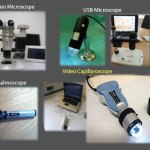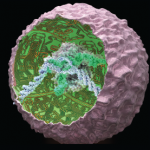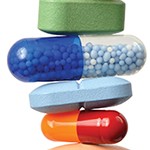(Reuters Health)—Prescriptions for nerve pain medicines like Neurontin and Lyrica have more than tripled in recent years, driven by increased use among chronically ill older adults and patients already taking opioids, a U.S. study suggests. The proportion of U.S. adults prescribed Neurontin and other drugs in the same family of medicines climbed from 1.2% in…
Search results for: type 1 diabetes

A History of the Science, Treatment of Rheumatologic Illnesses from Gold to Gene Therapy
Mysterious Ways The juxtaposition of the old and the new was readily evident that busy Wednesday morning. My first patient, a 94-year-old gentleman, Hal, arrived with a precise request. His rheumatologist for the past 40 years had just retired, and he was searching for a doctor with expertise in the use of gold sodium aurothioglucose,…

Rheumatologists Find Nailfold Capillaroscopy an Increasingly Useful Diagnostic Tool
Interest in viewing the nail capillaries dates to the late 17th century. Later research by Maurice Raynaud and others in the late 19th and early 20th century first established a direct link between the nailfold capillaries and certain medical conditions. Although underutilized in the past, with the advent of modern digital equipment and the validation…
Many Drug Companies Fail to Conduct Timely Safety Checks on Medicines after FDA Approval
(Reuters Health)—In the rush to approve new medicines, the U.S. Food and Drug Administration often requires drug companies to study possible side effects and alternative doses for medicines once they hit the broader market. A September 20 online analysis in the New England Journal of Medicine concludes that, in many cases, that’s not being done….

Fellows’ Forum Case Report: Tophaceous Bullae
As a manifestation of hyperuricemia, inflammatory bullous lesions have rarely been described in the past century. A more classic presentation of hyperuricemia is acute inflammatory gouty arthritis, characterized by the deposition of monosodium urate crystals. Other complications of chronic untreated hyperuricemia may include polyarticular arthritis, tophus formation and possible chronic destructive lesions of the bone,…

Is an Arthritis Vaccine Using Genetically Reprogrammed Stem Cells on the Horizon?
The words genetically modified are making people run for the hills these days. Not so when it comes to arthritis care, however. In the lab of one pioneering researcher, genetic engineering is catapulting arthritis treatment years ahead. Farshid Guilak, PhD, is a professor in the Department of Orthopaedic Surgery at Washington University, St. Louis, and…
Progress Made During HOD Annual Meeting
The AMA House of Delegates (HOD) met in Chicago for its annual meeting June 9–14. More than 530 HOD members were present, with several hundred AMA and association staff and guests. As I am sure you have noted from past issues of ACR@Work, the ACR is in its five-year membership review. The ACR must be…

Rheumatology Drug Updates: Uncertain Future for Romosozumab, Plus FDA Approves Tocilizumab for GCA
Romosozumab’s Future Is Uncertain Romosozumab, which has the possible U.S. brand name Evenity, is awaiting approval from the FDA.1 The treatment is an investigational, injectable biologic for treating osteoporosis. It increases bone formation and bone density, reducing a patient’s risk of fractures. The manufacturer no longer expects the FDA to approve the drug this year…

How Global Geographic Disparities Affect Healthcare Outcomes
Your home & your health: Does geography impact medicine? Does it matter whether a region is surrounded by large bodies of water, encircled by towering mountain peaks or that its residents share a common ancestry? Consider Switzerland, a nation with a highly developed economy replete with advanced technological and medical infrastructure. Despite these advantages, less…

NSAIDs Increase MI Risk; Plus New Label Warnings for Canagliflozin
NSAIDs Increase Myocardial Infarction Risk According a recent meta-analysis of real-world non-steroidal anti-inflammatory drug (NSAID) use, NSAIDs may increase the risk of acute myocardial infarction (AMI). The analysis used individual patient data meta-analysis of studies from healthcare databases in Canada, Finland and the U.K. to determine the time course for risk of AMI, as well…
- « Previous Page
- 1
- …
- 16
- 17
- 18
- 19
- 20
- …
- 29
- Next Page »